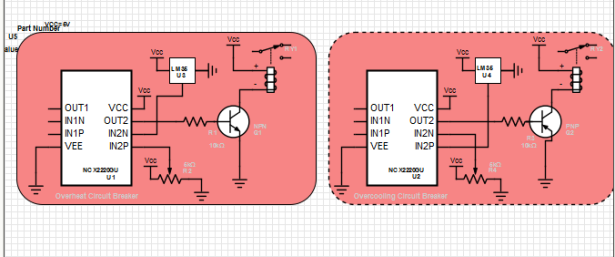This project automatically switches off the electrical flow in event of excess heating or excess cooling thus protecting the circuit from damage using NXP NCX2220GU. The comparator guarantees to operate at low voltages which makes this device convenient for use in 5 V systems and has a typical internal hysteresis of 9 mV that allows for greater noise immunity.
For overheat circuit breaker, reference is set to a higher value. An NPN transistor is used to drive the relay since the initial output current of the comparator is not sufficient to drive RY1. When temperature is below the reference set, the output of the comparator will be low then the transistor is in the cut off state and consequently relay does not work. When temperature goes beyond the set reference value, the output of comparator becomes high. Thus biasing the transistor Q1, activating the relay and breaking the external circuit. For overcooling circuit breaker, reference is set below the surrounding temperature and PNP transistor is used. In default state, output of comparator is high but PNP transistor works as not gate as it does not gets biased at high voltage and consequently relay does not work. When temperature becomes lower than the set value, then output of comparator becomes low thereby biasing PNP transistor. Thus activating relay and breaking external circuit.
Overheat/overcooling circuit breaker has the primary objective of cost efficiency in providing circuit protection.
For More Details: Overheat/Overcooling Circuit Breaker


